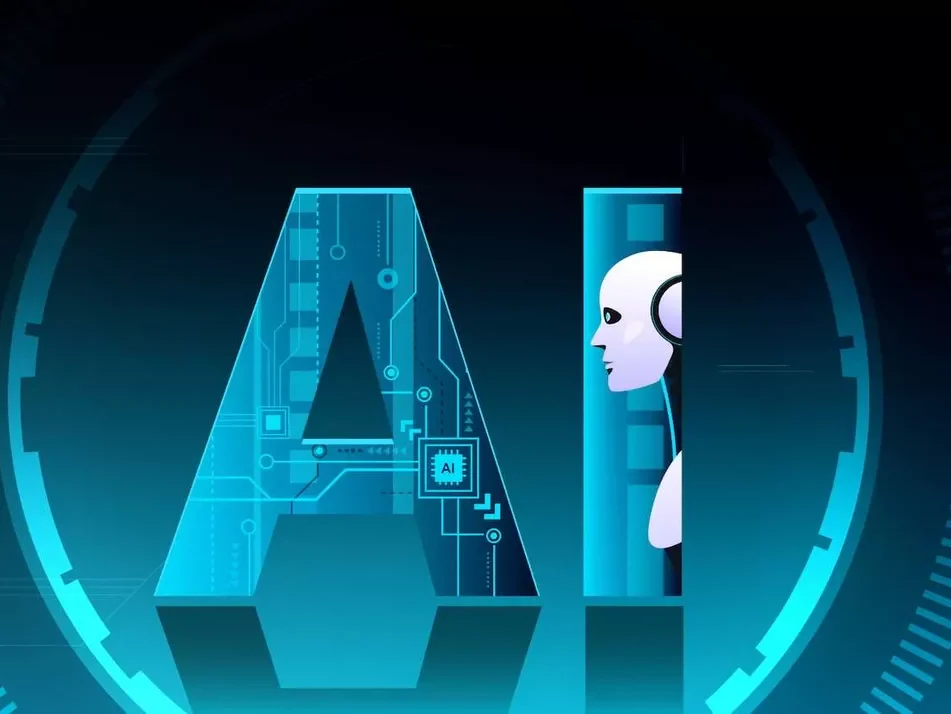Generative artificial intelligence (genAI) is one of the primary areas of study for specialists interested in implementing modern technologies. It transformed the content creation industry by allowing animated details, pictures, and text to be generated instantly. The scope of generative AI is vast; you may find it in different sectors, including advertising, medicine, education, sales, etc.
Generative AI is one of the most promising technologies in 2023. According to Gartner’s emerging trends report, such a tool has significant growth potential. The report states genAI could generate approximately 10% of all information and 20% of test data in consumer programs.
The hype around generative AI is one of the main reasons why we should expect new trends around such an advanced instrument. Let’s discuss the generative AI definition, the classes of AI structures, and the most famous instances of using it.
The Definition of GenAI
First, we need to define what is generative AI. It involves applying AI-backed systems to build actual content, including texts, pictures, music, videos, etc.
GenAI is based on models (large AI structures) that successfully cope with various objectives, including systematization, questions and answers, classification, etc. In addition, even with a short training period, the underlying structures can be adapted to target use cases with a minimum volume of sample data.
Why Is Generative AI Vital?
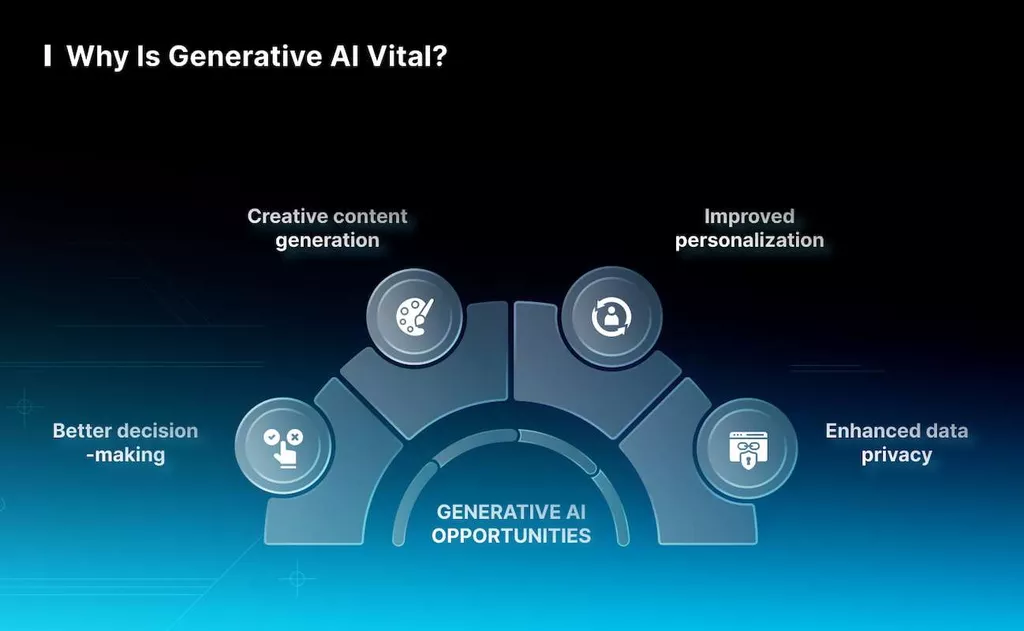
From ChatGPT and Google Bard to Midjourney, there are many variants of what genAI and deep learning models suggest worldwide. In fact, the versatility of such instruments in combining different media, including converting text to picture and audio to text or words, has opened up significant opportunities to realize creative potential and generate additional profit. Let’s analyze the main profits of genAI solutions:
- Generative systems may be utilized to build actual and exciting content that is indiscernible from human-generated products, including pictures, videos, and texts. It is especially helpful in the entertainment and promotion sectors.
- Generative mechanisms can be utilized to raise the efficiency and precision of existing AI frameworks, including natural language processing (NLP) and computer vision. Generative instruments often make synthetic information to study and estimate other AI-backed digital products.
- GenAI solutions may be utilized to research and process sophisticated databases in unconventional ways so that organizations and experts may find tendencies and patterns they previously missed due to the inability to process the volume of the database.
- Generative structures allow you to automate and speed up many routine procedures, saving working hours and assets for firms.
In a recent Gartner study of 2,500 executives, 38% reported improving client experience and customer retention were their top goals when investing in genAI. It was followed by increased income (26%), expenditures optimization, and the enterprise’s continuous operation (7%).
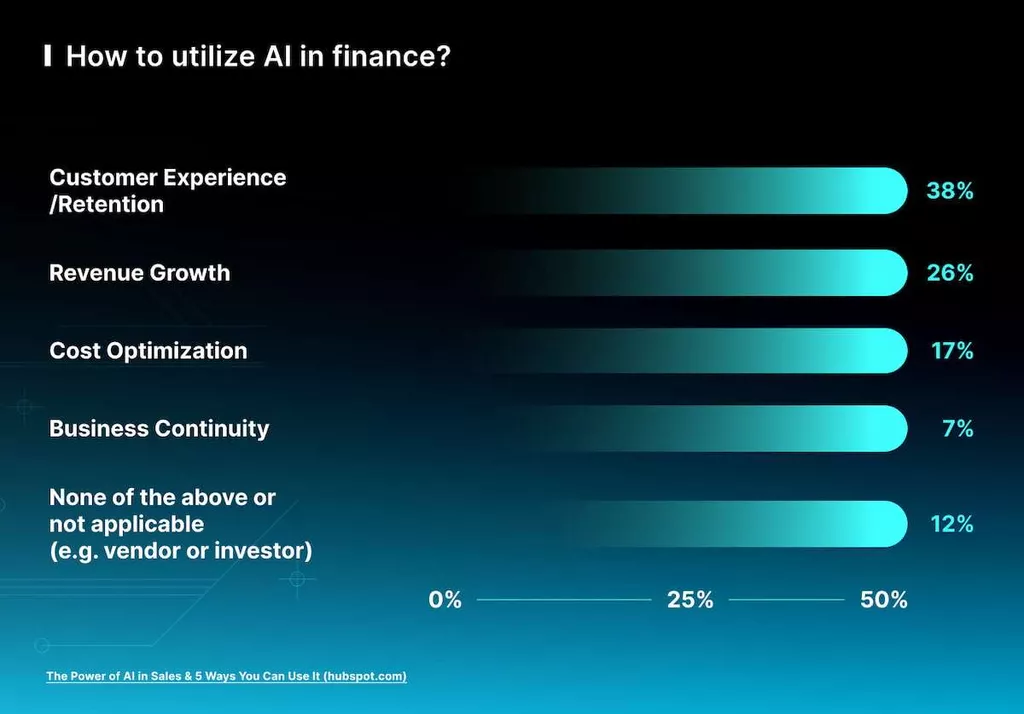
Primary Principles of Generative AI
Before implementing the system into your business, it is vital to comprehend how does generative AI work.
GenAI begins with a hint, which can be in words, a photo, a video file, musical signs, or any other categories of input AI-ruled instruments may parse. Different AI structures then create actual content in response to the request; it could be text, a solution to a problem, or a realistic fake that relies on pictures or audio recordings of human speech.
The first variants of generative AI involved sending various information with APIs and other complex procedures. Programmers had to add particular instruments and write generative AI applications utilizing multiple programming languages, e.g., Python.
Nowadays, pioneers in the genAI field are working to create a user-friendly interface that allows queries to be explained in simple terms. Once the consumer has the answer to the question, they can correct the results by reviewing the manner, tone, and other components he needs in the novel content.
Some Words about GenAI Models
Generative modeling artificial intelligence combines different mechanisms to compose and analyze content. If it is necessary to form text, modern NLP structures transform symbols, e.g., syllables, words, and punctuation marks, into sentences, objects, and actions, presented like vectors utilizing modern encoding instruments. In the same way, pictures are turned into different visual components; they are also presented as vectors.
By comprehending the various categories of genAI, you may appreciate their full functionality and harness their potential to form client solutions:
- Generative Adversarial Networks (GANs): these top-notch generative AI models include multiple neural structures, such as a generator and a discriminator. The generator forms realistic databases, and the discriminator estimates the authenticity of the composed content. In a constantly competitive environment, such structures are being perfected, which makes it possible to reach maximum realism of outcomes, including pictures, videos, and 3D products.
- Variational Autoencoders (VAE): it is a popular genAI class that utilizes an encoder to define vital properties of an input database and compresses them into a lower-dimensional environment. Then, the decoder restores the initial insights from the compressed structure, forming additional patterns similar to the original database. Such systems allow you to generate music, pictures, and text content.
- Recurrent Neural Networks (RNN): these structures successfully process sequential insights, making them an ideal solution for time series, NLP, and speech recognition processes. RNNs remember past input information, allowing people to form content relying on contextual and temporal factors.
- Transformer models: the prevalence of such structures is due to their achievements in NLP. Such service engine-based applications find complex relationships in the input information. Transformer systems are suitable for developing high-quality text, using chatbots, making novel content, and translating documents.
It’s crucial to remember genAI and large-scale language models are evolving at a breakneck pace. Modern tools, architectures, and innovations are emerging almost daily.
The Most Famous GenAI Tools
Cutting-edge generative AI tools cover a variety of functions and business application scenarios, although many popular instruments today are large-scale language models and content-generation applications. Let’s talk more particularly about the most famous genAI instruments:
- ChatGPT is a free AI-backed chatbot that uses OpenAI’s GPT LLM algorithms. Its main tasks are to analyze user data and output information based on consumer questions. This structure also has a paid solution to provide access to GPT-4 and plugins to expand the functionality.
- DALL-E is a generative AI created by OpenAI. It was trained on an extensive picture database, allowing consumers to enter text data and receive an image as output.
- Bard is Google’s answer to ChatGPT, a chatbot and content generation system that relies on the PaLM 2 language model and functions as a search assistant. Such an application crawls web pages and organizes data to give the consumer an accurate answer.
- Stable Diffusion is an open-source concept that provides free main models for general use. Consumers can download it or configure it in the cloud. This fundamental model allows users to generate pictures and boxes or fine-tune models on their database to provide optimal outputs.
GenAI instruments may meet different project conditions and objectives for professional and individual use. With many systems available today with free trials or limited options, it is time to check various solutions to see if they can perfect your business processes.
Primary Use Cases for GenAI
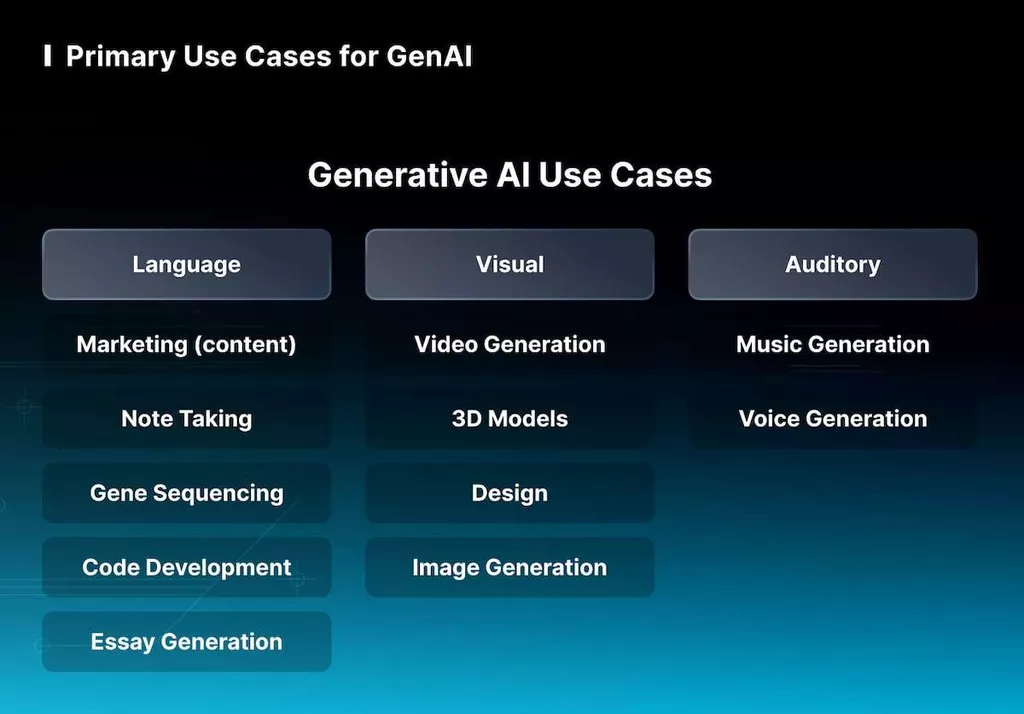
The detailed description of genAI suggests it provides many benefits to firms and consumers of the technique. Organizations from various areas use advanced genAI patterns to build non-standard custom solutions. Let’s look at a few striking paths to utilize generative AI to make it simpler to assess its potential:
- Text: genAI utilizes algorithms to produce content that looks like a human created. Text results are used to launch adaptive chatbots, automatic email responses, compose content for a website, personalize an advertising campaign, etc. The most famous generative AI examples are ChatGTP, Google Bard, etc.
- Code: automating code and documents, converting text to SQL, and utilizing web application templates have significant potential for increased development efficiency. An optimal genAI app in the industry is GitHub’s Copilot, which may suggest a line of code or individual functions, acting as a reliable programmer’s assistant.
- Images: GAN models can create unique pictures or adjust previously taken photos. The scope of applications is limitless since they allow you to launch novel projects and develop exciting ideas and full-fledged graphics.
- Design: genAI simplifies the design research process. Specialists enter design goals into generative design software and various parameters, e.g., performance indicators, materials, cost, etc. The program examines all options for solving the problem and generates an alternative design.
- Video: genAI makes video files, which can then be used to create virtual reality, special effects in cinema, etc. Many advertising firms use such systems to create video content or edit existing movies. Standard generative AI tools are Descript and Xpression.
Many people wonder, can genAI replace live agents in the workplace? Proponents of the technique argue that while generative AI may replace humans in various jobs, it will create more jobs as humans will always need live agents in the workplace.
Experts still must select the optimal genAI structure for the chosen objective, collect and preprocess data, and estimate the performance of the AI model.
Some Challenges with Generative AI
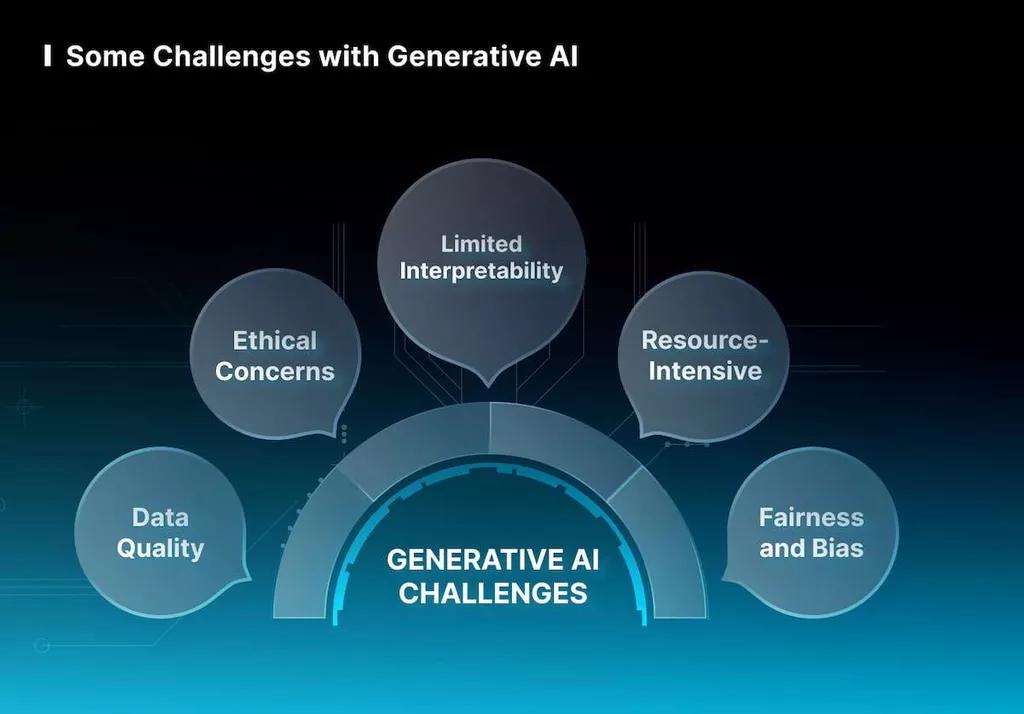
Adding genAI to current procedures and structures demands balancing technological achievements and organizational alignment. One of the fundamental distinctions is users and organizations have various business needs. Additionally, firms that want to introduce AI-backed generative products should be aware of the difficulties that may arise when working with genAI:
- Quality of information: generative mechanisms demand high-quality insights to study and produce realistic and novel content. However, collecting and preparing reports may be time-consuming and expensive; such procedures are subject to error and bias. Besides, privacy and information safety concerns may limit the availability and storage of such insights.
- Model performance and estimation: generative structures require massive computing capabilities to study and maintain. They need custom hardware and technical infrastructure, including modern graphics professors, TPUs, cloud computing, etc. Generative platforms are difficult to compare and evaluate because experts have not yet created accurate and fair parameters for identifying their quality and functionality.
- GenAI systems may produce meaningless or inappropriate results for the chosen context. It creates a lot of complexity, primarily if you use AI-backed structures to form content for clients or when making important decisions.
Continuous human monitoring and feedback, implementation of quality control techniques, and tuning models according to particular recommendations can perfect the quality and precision of structures.
Final Words
Choosing MetaDialog as a partner is the optimal solution when developing generative artificial intelligence. Our experts are proud to provide more advanced services related to building AI-backend platforms tailored to your business needs. What sets our company apart is our extensive practice and commitment to excellence; this is reflected in our unique generative AI consulting services.
Together, you may realize your genAI vision, revolutionize content-building and problem-solving capabilities, and ensure your successful journey into generative AI.
